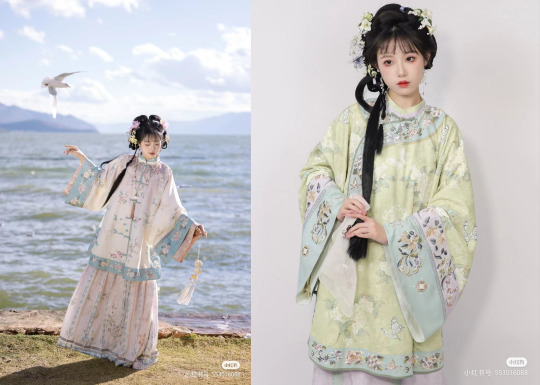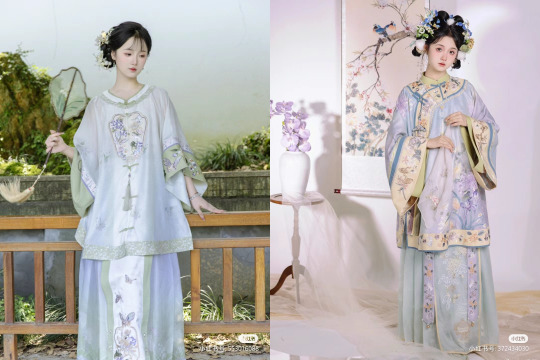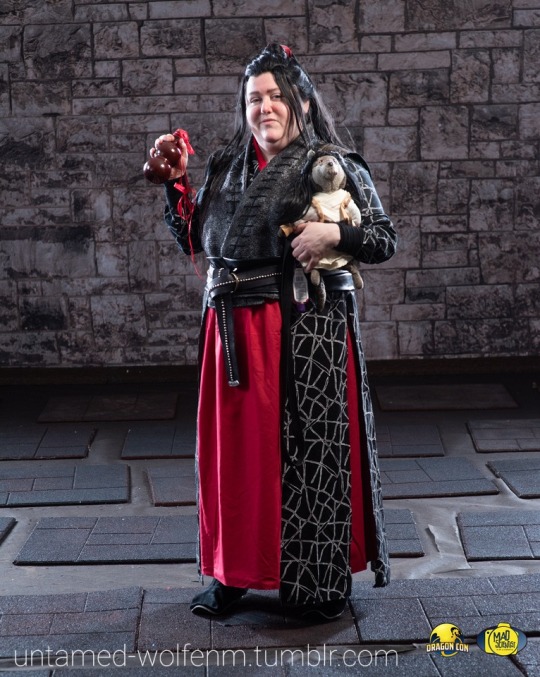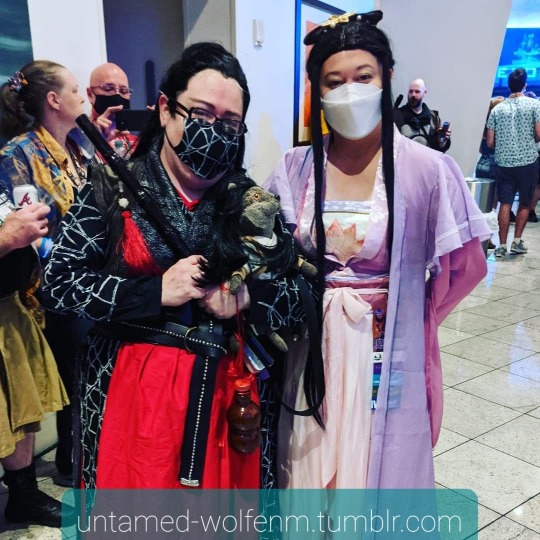#i'm not professional about hanfu so
Text





chinese fashion (genre: qinghannv, han women's clothing in qing dynasty)
#china#fashion#chinese fashion#bot asked a hanfu store designer about it and she thinks it's not technically hanfu#it really wasn't qizhuang either#and should be a separate category#so the tag hanfu is not included#i'm not professional about hanfu so#just sharing beautiful chinese clothing#qinghannv
294 notes
·
View notes
Note
This is just curiosity (not meant to be confrontational) but could you expand on what you mean about Chinese imperialism prior to the 19th century being “mild”? I guess I just don’t know how those two concepts can go together as imperialism usually involves some degree of violence through conquest, right?
That is a very valid question so thank you for bringing it up. I just wanted to mention the issue off hand in that post since the focus was on the hanfu hanbok debate, so I'm sorry it wasn't very well articulated. "Mild" was probably not the best word choice in hindsight (one person in the tags suggested “subtle” instead), what I meant was that Chinese imperialism prioritized the establishment of Chinese culture as normative rather than physical conquest or economic exploitation of neighboring countries, leading to a false impression that it wasn't very forceful. Though physical violence and expansion was definitely an integral part of Chinese imperialism, for example the routine conquests of neighboring territories (often those inhabited by nomadic peoples). To me, the insidious nature of Chinese imperialist discourses that framed Chinese culture as universal and reduced the cultures of neighboring, smaller countries to the state of otherness was maybe its true strength. I am thinking in particular (pun intended) of a passage by Japanese feminist Ueno Chizuko:
Throughout Japanese history, "Japaneseness" has been constructed in the shadow of China, and this has given it an irreducibly colonial nature. Premodern aristocrats and intellectuals were necessarily bilingual, since much upper-class written discourse was produced in Chinese, not Japanese. China has always been an ethnocentric imperial state that has considered its own culture to define the borders of the fully human realm. Though sometimes conquered by nomadic tribes and once invaded by Japan, the Chinese have never questioned their own superiority and universality. With this overwhelming Chinese presence as a focal point, Japan has defined itself as particular, distant, and differentiated- put more simply, as inferior to the universal standards of China.
I sort of got the actual effects of Chinese imperialism and the reception of it mixed up, since I had in mind how Western colonial narratives (which dominate discourse currently and overshadow any vestige of Chinese imperialism) frame China as weak and effeminate and Chinese imperialism as ineffective to the point that people struggle to acknowledge historical Chinese imperialism as capable of doing actual harm. A common reaction to modern Chinese claims to the imperial legacy I see is to laugh it off as comical rather than treat it with serious concern. I guess within the Orientalist framework, China (or any “oriental despot”) was simultaneously strong and weak, always wanting to oppress but failing to do it successfully. Chinese imperialism appears mild to us now because Western imperialism said it was. This ties into the thing about how Chinese imperialism collapsed not because of anti-imperialism but another kind of imperialism, so many effects of it on neighboring countries and China itself remain unresolved tensions. Though again, I’m not professionally trained in this area of history so these are just my personal two cents, please don’t take my word for it.
79 notes
·
View notes
Text
i'm in the middle of facilitating a virtual training that involves several full days of talking about interpersonal violence, which is fine, but it's exhausting, and when i'm tired and sometimes emotional, my sensory stuff gets a bit activated too
all of which is to say that i wore a ridiculous number of hanfu layers today, and because of their length, fabric, and number, it was SO GOOD because it meant
a) it was all ankle-length draping-style pieces over a shapeless (non-hanfu) cotton-gauze underdress, so no BadWrong pressure points anywhere on my body,
b) just heavy enough to feel like i had something weighted draped over my shoulders, and
c) being only visible from my shoulders up, i still looked Appropriately Professional while being able to accommodate a bad sensory day in a way that my western clothes make a lot more difficult
tl;dr develop a love of hanfu for the aesthetic, stick around for the accidental accessibility benefits 😂
#i had on like 4 layers over the dress and it was so satisfying#so much soft fabric piled on me while still pulling off the Advocate Trainer Voice#hound barks
10 notes
·
View notes
Note
Hello! I'm new to the hanfu world so I'm sorry if this has been asked before. While learning about the clothing of different eras, I realized that women's clothing in Tang dynasty was less... concealing than the others. (? I notice that women hanfu from other eras kinda fully draped them from neck to toe) Is there any reasons behind the difference of the clothing in Tang dynasty? Thank you.
Hi! Thanks for the questions.
This is a rather complicated question that deserved their own thesis. I cannot answer this professionally. I could comment a bit from what I knew.
1. Climate. Tang dynasty was rather warm compare to like Han or Ming dynasty.
2. Aesthetic. Tang dynasty focused more on military might and sporty aesthetic compared to, like, Song and Ming (there were reasons for this, which was a long story).
Modern people also endowed certain vibe to each dynasty. While Tang style also draped from neck to toe, it would usually would have wider neckline compared to Ming style, which often be neck-wrapping, especially in formal settings.
Also there is a difference between clothes for photos and those for daily wear. Ming-style in summer could show quiet a bit of neck too. People could choose not to buttons to the top, or just wear those with lower neckline. Those neck-wrapping clothes usually only exists in photos and fully air-conditioned functions during those period...... See some examples in my old post about summer hanfu.
Historically Song and Ming clothing could be revealing in their own way, such as low neckline was not unusual in Song dynasty.
I hope this answer is satisfactory.
68 notes
·
View notes
Text
Merry Samhain / Hallowe'en to all, and Happy Natal New Year to my favourite character, Wei Wuxian of the Chinese drama The Untamed / Chen Qing Ling! Here are pics of my Wei Wuxian cosplay (his archery tournament outfit), which I wore to Dragon Con 2021, and others that cosplayed Untamed / Mo Dao Zu Shi characters there too! Please do not repost these images, only reblog!!
These first pics were taken by professional photographer Bryan Humphrey. Lan Wangji was played by @seekerofpatterns, and A-Yuan was played by NightstalkerM, of The (Mis)Adventures of a Plush Wolf.




The first photo here was taken by vela_lyrae (on Insta), the second and third by Seekerofpatterns, the fourth by our friend, and the last pic was taken by one of my con roommates. The first pic includes my friend @lokittysarmy as another Wei Wuxian; I don't know the Wei Wuxian cosplayer in the second pic, nor the Jiang Yanli in the third. Seekerofpatterns was Wen Ning in the fourth pic.





I learned how to make a playable PVC flute for my Chenqing (although just how playable it is is debatable, LOL). I sculpted the bamboo nodes put of Apoxy-Sculpt. I bought the tassle-charm.
For the wine gourd, I painted a Pom Wonderful bottle. I had to wing it when I made my hanfu boots. I bought a ring-belt, but I added the studs, and I made the belt-tip out of Apoxy-Sculpt. I made the waist-cinch, and 2 versions of the red under-skirt (for the red under-shirt, I just made a collar, not a full shirt). I bought the wig.
As for the outer-robes, I spent about ten hours tracing elements of the robe pattern from a screenshot in photoshop, until I had a working repeating pattern file (which I uploaded at Cafe Press to make the facemask). For the skirt panels, I traced the pattern in white pencil with a light-box, but the fabric for the shirt was thicker, so that didn't work. Instead, I had to cover the back of the pattern sheets with white conte, lay it on the robe fabric, and draw over it, pressing the conte onto the fabric. I then traced over that with the white pencil. Finally, I painted over the pencil. It took me probably a couple hundred hours (with 2 cousins helping me for about 1.5 of them). And the shirt isn't finished -- I only had enough time to bother painting what you could see. Even then, I was painting till right before we left for the hotel!
The vest was painted freehand, and took me 4 days. (There's at LEAST 3 different versions used in the show!)
For A-Yuan, I bought the wig, and styled it. I made the robes, belt, and jacket. (See pics here.)
So yeah, that was about a year and a half's worth of work, but the positive reaction at Dragon Con was worth it -- I'm so glad other people were enthusiastic about him too!
#the untamed#chen qing ling#wei wuxian#lan wangji#mine#the untamed cosplay#2021#untamed fanworks#cql#wei wuxian cosplay#wen ning#a-yuan#jiang yanli#Bryan Humphrey#seekerofpatterns#lokittysarmy#my cosplay#cosplayers of tumblr#cosplay
22 notes
·
View notes